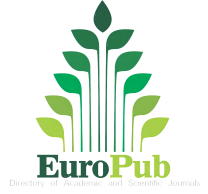Left Ventricular Twist Mechanics in Amateur Marathon Runners: A Speckle Tracking Echocardiographic Study
DOI:
https://doi.org/10.62767/jecacm603.4112Keywords:
Marathon, left ventricular remodeling, Speckle tracking echocardiography, cardiac function, Traditional Chinese Medicine constitution typesAbstract
Objective: Long-term endurance exercise, such as marathon running, induces cardiac adaptations. However, the impact of different training durations on left ventricular (LV) structure and function remains incompletely understood. Methods: Marathon runners were categorized into three groups based on training duration: short-term (ST), more extended-term (MET), and long-term (LT), along with a control group of non-runners. Standard echocardiography and speckle tracking imaging were performed to assess LV structure and function. Diastolic function was evaluated via Doppler and Doppler tissue imaging parameters. LV mechanics were assessed by global longitudinal strain (GLS), apical rotation, LV twist, torsion, and untwisting rate (UTR), before and after the marathon. The distribution of Traditional Chinese Medicine (TCM) constitution types among amateur marathon runners of different ages was also investigated. Results: Compared with controls, LT runners showed increased interventricular septum diastolic (IVSd), LV end-diastolic diameter (LVEDD), LVEDD index (LVEDDi), posterior wall thickness (PW), relative wall thickness (RWT), end-diastolic volume (EDV), EDV index (EDVi), end-systolic volume (ESV), ESV index (ESVi), stroke volume (SV), stroke volume index (SVi), LV mass (LVM), and LVM index (LVMi) (p < 0.05). LT runners exhibited lower early diastolic velocity (E), E/A ratio, early diastolic annular velocity (E′a), and E/E′a ratio, but higher late diastolic atrial velocity (A) compared to ST, MET, and control groups (p < 0.01). Before the marathon, LT runners had higher absolute apical rotation, LV twist, LV torsion, and UTR, but lower GLS than other groups (p < 0.05). One hour post-marathon, LV twist and torsion showed similar trends across all runner groups (p > 0.05). Changes (Δ) in GLS, global circumferential strain (GCS), apical rotation, LV twist, torsion, and UTR were greater in LT runners compared to ST and MET groups (p < 0.05). A higher prevalence of the balanced Pinghezhi constitution (as defined by TCM) in the oldest age group (42-50 years). Conclusion: Amateur marathon runners demonstrate training duration-dependent cardiac remodeling, with long-term runners exhibiting more pronounced structural and functional adaptations. This was paralleled by a potential link between intrinsic physiological resilience and the capacity for long-term athletic adaptation.
References
D'Silva A, Bhuva AN, van Zalen J, et al. Cardiovascular remodeling experienced by real-world, unsupervised, young novice marathon runners. Frontiers in Physiology 2020; 11: 232.
Scheer V, Costa RJS, Doutreleau S, et al. Recommendations on youth participation in ultra-endurance running events: a consensus statement. Sports Medicine 2021; 51(6): 1123-1135.
Roberts WO, Stovitz SD. Incidence of sudden cardiac death in Minnesota high school athletes 1993-2012 screened with a standardized pre-participation evaluation. Journal of the American College of Cardiology 2013; 62(14): 1298-1301.
Pelliccia A, Caselli S, Sharma S, et al. European Association of Preventive Cardiology (EAPC) and European Association of Cardiovascular Imaging (EACVI) joint position statement: recommendations for the indication and interpretation of cardiovascular imaging in the evaluation of the athlete's heart. European Heart Journal 2018; 39(21): 1949-1969.
Pelliccia A, Quattrini FM, Cavarretta E, et al. Physiologic and clinical features of the paralympic athlete's heart. JAMA Cardiology 2021; 6(1): 30-39.
Maron BJ, Levine BD, Washington RL, et al. Eligibility and disqualification recommendations for competitive athletes with cardiovascular abnormalities: Task Force 2: preparticipation screening for cardiovascular disease in competitive athletes: a scientific statement from the American Heart Association and American College of Cardiology. Circulation 2015; 132(22): e267-272.
Buckberg GD, Hoffman JI, Coghlan HC, et al. Ventricular structure-function relations in health and disease: Part I. The normal heart. European Journal of Cardio-Thoracic Surgery 2015; 47(4): 587-601.
Domenech-Ximenos B, Sanz-de la Garza M, Sepulveda-Martinez Á, et al. Assessment of myocardial deformation with CMR: a comparison with ultrasound speckle tracking. European Radiology 2021; 31(10): 7242-7250.
Sengupta SP, Mahure C, Mungulmare K, et al. Myocardial fatigue in recreational marathon runners: a speckle-tracking echocardiography study. Indian Heart Journal 2018; 70 Suppl 3(Suppl 3): S229-S234.
Lord RN, Utomi V, Oxborough DL, et al. Left ventricular function and mechanics following prolonged endurance exercise: an update and meta-analysis with insights from novel techniques. European Journal of Applied Physiology 2018; 118(7): 1291-1299.
Oxborough D, Whyte G, Wilson M, et al. A depression in left ventricular diastolic filling following prolonged strenuous exercise is associated with changes in left atrial mechanics. Journal of the American Society of Echocardiography 2010; 23(9): 968-976.
Lang RM, Badano LP, Mor-Avi V, et al. Recommendations for cardiac chamber quantification by echocardiography in adults: an update from the American Society of Echocardiography and the European Association of Cardiovascular Imaging. Journal of the American Society of Echocardiography 2015; 28(1): 1-39.e14.
Lang RM, Bierig M, Devereux RB, et al. Recommendations for chamber quantification. European Journal of Echocardiography 2006; 7(2): 79-108.
Gherbesi E, Gianstefani S, Angeli F, et al. Myocardial strain of the left ventricle by speckle tracking echocardiography: from physics to clinical practice. Echocardiography 2024; 41(1): e15753.
Hjertaas JJ, Einarsen E, Gerdts E, et al. Impact of aortic valve stenosis on myocardial deformation in different left ventricular levels: a three-dimensional speckle tracking echocardiography study. Echocardiography 2023; 40(10): 1028-1039.
Dawkins T. Evidence of functional remodelling of the right and left ventricle in athletes. Cardiff Metropolitan University: Cardiff, UK, 2021.
King G, Wood MJ. The heart of the endurance athlete assessed by echocardiography and its modalities: "embracing the delicate balance". Current Cardiology Reports 2013; 15(8): 383.
Liu S, Laghzali O, Shalikar S, et al. Cardiac MRI strain as an early indicator of myocardial dysfunction in hypertrophic cardiomyopathy. International Journal of Molecular Sciences 2025; 26(4): 1407.
Whyte G, George K, Shave R, et al. Impact of marathon running on cardiac structure and function in recreational runners. Clinical Science 2005; 108(1): 73-80.
Vinereanu D, Florescu N, Sculthorpe N, et al. Differentiation between pathologic and physiologic left ventricular hypertrophy by tissue Doppler assessment of long-axis function in patients with hypertrophic cardiomyopathy or systemic hypertension and in athletes. The American Journal of Cardiology 2001; 88(1): 53-58.
Singh RB, Elkilany GN, Fedaco J, et al. Evolution of the natural history of myocardial twist and diastolic dysfunction as cardiac dysfunction. In Pathophysiology, Risk Factors, and Management of Chronic Heart Failure; Elsevier: Cambridge, MA, USA, 2024; pp.65-77.
Sengupta PP, Tajik AJ, Chandrasekaran K, et al. Twist mechanics of the left ventricle: principles and application. JACC: Cardiovascular Imaging 2008; 1(3): 366-376.
Unnithan VB, Beaumont A, Rowland T, et al. Left ventricular responses during exercise in highly trained youth athletes: echocardiographic insights on function and adaptation. Journal of Cardiovascular Development and Disease 2022; 9(12): 438.
Perkins D. The influence of maturation on left ventricular remodelling and haematological adaptation with endurance training. Cardiff Metropolitan University: Cardiff, UK, 2022.
Balthazaar SJT, Nightingale TE, Alrashidi AA, et al. Effects of exercise interventions on cardiac structure, function, and mechanics in individuals with chronic motor-complete spinal cord injury: an exploratory randomized clinical trial. Topics in Spinal Cord Injury Rehabilitation 2025; 31(2): 62-75.
Boldt KR, Rios JL, Joumaa V, et al. Force properties of skinned cardiac muscle following increasing volumes of aerobic exercise in rats. Journal of Applied Physiology 2018; 125(2): 495-503.
Kellermayer D, Kiss B, Tordai H, et al. Increased expression of N2BA titin corresponds to more compliant myofibrils in athlete's heart. International Journal of Molecular Sciences 2021; 22(20): 11050.
Stebbings GK, Williams AG, Herbert AJ, et al. TTN genotype is associated with fascicle length and marathon running performance. Scandinavian Journal of Medicine & Science in Sports 2018; 28(2): 400-406.
Published
Data Availability Statement
The data presented in this study are available on request from the corresponding author.
Issue
Section
License
Copyright (c) 2025 The Author(s)

This work is licensed under a Creative Commons Attribution 4.0 International License.







